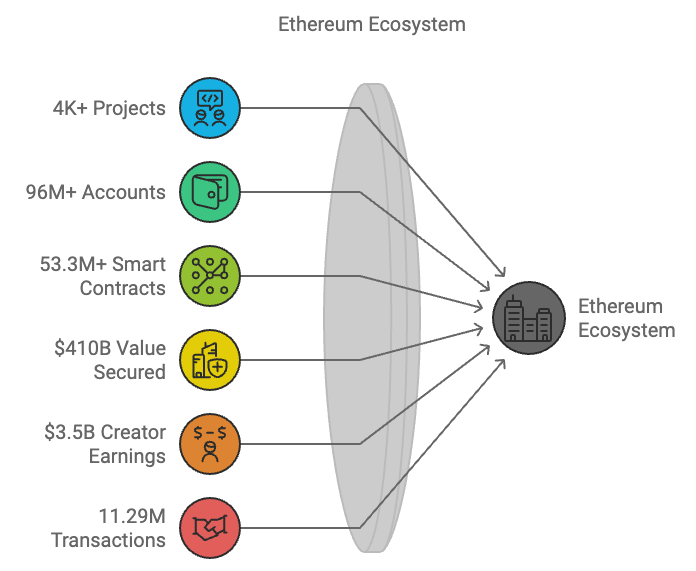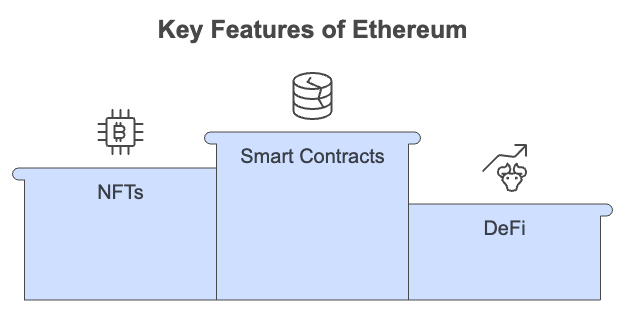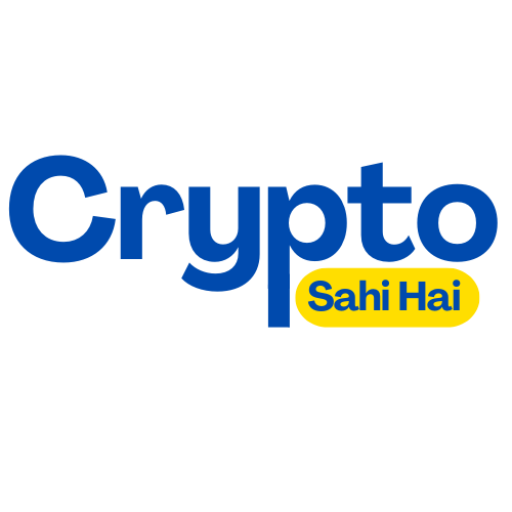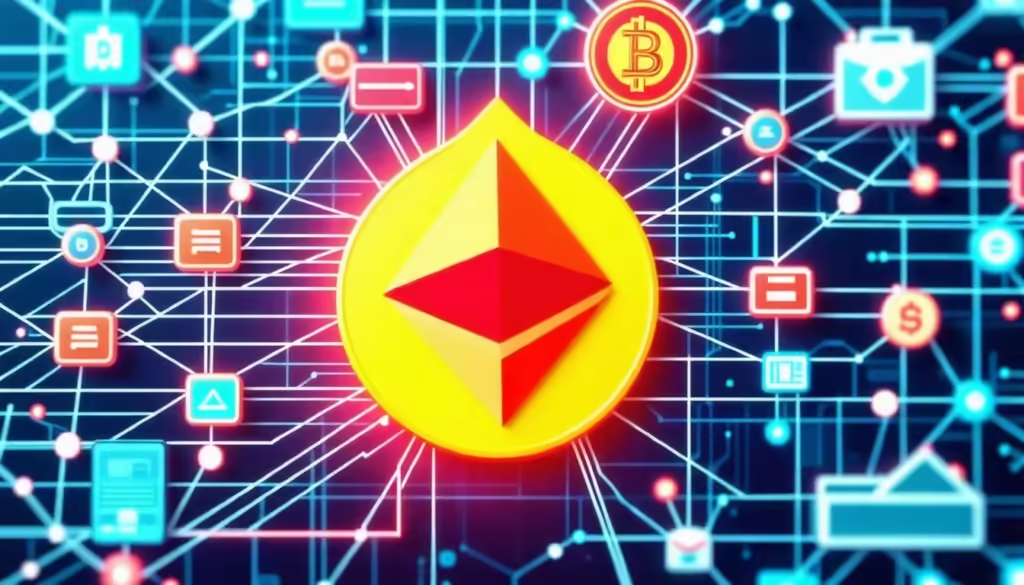Ethereum is a revolutionary, open-source platform that enables developers to build and deploy applications using blockchain technology. It provides a secure environment for data storage and executes programs called smart contracts. These contracts automatically perform actions when predefined conditions are met, remarkably boosting transaction speed and security.
Ether (ETH), the native currency of Ethereum, fuels all transactions within the network. Picture Ethereum as a vast digital playground where anyone can create their own games or tools without needing permission. As we explore Ethereum, we reveal its transformative influence on online interactions and digital asset management.
Key Takeaways
- Ethereum is a decentralized blockchain platform, like a digital playground, enabling developers to create and deploy smart contracts and decentralized applications (dApps).
- Ether (ETH) is the lifeblood of Ethereum, powering transactions and staking, and energizing the entire ecosystem.
- Using a proof-of-stake consensus mechanism, Ethereum allows users to stake ETH, acting as guardians who validate transactions and add new blocks.
- As the next-largest cryptocurrency by market cap, Ethereum provides a versatile foundation for a wide range of applications, from financial services to immersive gaming.

Understanding Ethereum and Its Purpose
Ethereum is an open-source platform that empowers developers to create and run applications on a secure blockchain. Its native currency, Ether (ETH), fuels transactions within this digital ecosystem. Imagine Ethereum as a colossal computer, accessible to all, where innovative applications come to life.
At the core of Ethereum are smart contracts. Visualize them as digital vending machines: they execute actions automatically when specific conditions are met. For example, pay the correct amount of Ether, and the smart contract dispenses your digital item—no middleman needed. This groundbreaking feature positions Ethereum as a strong foundation for decentralized applications (dApps).
Ethereum operates on a proof of stake mechanism, similar to a club where members validate transactions based on their Ether holdings, enhancing energy efficiency. As we step into the era of Web3, Ethereum stands as a pillar of decentralized finance (DeFi) and non-fungible tokens (NFTs), revolutionizing our online interactions.
Ready to look at Ethereum’s vast potential?
For deeper insights, explore this guide.
Key Features of Ethereum: Smart Contracts and dApps
Ethereum is an open-source platform that empowers developers to create and deploy applications using blockchain technology, a secure method for data storage. Its native currency, Ether (ETH), fuels transactions across the network. At the core of Ethereum’s innovation are smart contracts—automated programs that execute actions when specific conditions are met. This revolutionary feature transforms Ethereum into a dynamic tool for building decentralized applications (dApps), reshaping our online interactions. Are you ready to explore the mechanics of Ethereum and open up its vast potential?
Key Features:
- Ethereum: A strong open-source blockchain platform tailored for dApps and smart contracts.
- Ether (ETH): The cryptocurrency that powers transactions within the Ethereum ecosystem.
- Smart Contracts: Think of them as digital vending machines—insert Ether, and if conditions are met, your outcome is delivered automatically.
- Decentralization: Ethereum is reshaping the digital place, securing its position as the next-largest cryptocurrency by market cap.
Imagine smart contracts as your personal vending machines: you input Ether, and when the conditions align, your desired result is dispensed. They eliminate middlemen, streamlining transactions and boosting efficiency. Using the Ethereum Virtual Machine (EVM), developers can craft complicated applications that drive innovation and make sure security. As we enter the era of Web3, Ethereum stands as a cornerstone of decentralized finance (DeFi) and non-fungible tokens (NFTs), paving the way for new ownership and investment opportunities. To find how Ethereum is shaping the future, check out this article.

Ether: The Native Cryptocurrency of Ethereum
Ether (ETH) is the native cryptocurrency of Ethereum, a groundbreaking platform that allows users to create and operate decentralized applications (dApps) and smart contracts. Think of Ethereum as a vast digital playground where developers can build innovative apps, similar to those we use on our smartphones. But what truly sets Ether apart?
Ether powers the entire Ethereum ecosystem, facilitating transactions and computations. When users interact with Ethereum, they pay gas fees in Ether—like fuel for a car; without it, progress halts. While Ether can still be mined, Ethereum has transitioned to a more eco-friendly proof of stake system, enhancing energy efficiency.
As we accept the era of Web3, Ether plays a critical role in the tokenization of digital assets, enabling everything from non-fungible tokens (NFTs) to decentralized finance (DeFi) applications. With the strong Ethereum Virtual Machine, developers can create solutions that transform our digital experiences.

The Role of Blockchain Technology in Ethereum
Ethereum is an open-source platform that empowers developers to create and deploy applications using blockchain technology, a secure method for data storage. Its native currency, Ether (ETH), fuels transactions within this dynamic ecosystem.
At the core of Ethereum are smart contracts—automated programs that execute actions when specific conditions are met. Think of them as digital vending machines: you input your selection, and they deliver the result instantly. This innovation revolutionizes online interactions, positioning Ethereum as a powerful tool for building decentralized applications (dApps). Are you ready to explore the mechanics of Ethereum and harness its vast potential?
- Open-source platform: Empowers developers to craft dApps and smart contracts.
- Ether (ETH): Powers transactions and energizes the Ethereum ecosystem.
- Smart contracts: Function like digital vending machines, executing agreements autonomously.
- Decentralization: Transforms the digital place, solidifying Ethereum’s status as the next-largest cryptocurrency by market cap.
Exploring Ethereum reveals a decentralized framework that enhances security and ignites innovation across diverse sectors. With the upcoming Ethereum 2.0 upgrade, expect improved scalability and interoperability, paving the way for a more connected digital future.
Decentralized Finance (DeFi) and Its Impact on Ethereum
Ethereum is a groundbreaking open-source platform that empowers developers to create applications using blockchain technology, a secure method for storing data. Its native currency, Ether (ETH), fuels transactions throughout the network. A key feature of Ethereum is its smart contracts, which function like digital vending machines: they automatically execute agreements when specific conditions are met, revolutionizing online interactions.
But Ethereum is more than just a developer’s playground; it stands at the forefront of Decentralized Finance (DeFi). This innovative financial ecosystem allows users to lend, borrow, and trade without the need for traditional banks. Imagine having total control over your finances, free from intermediaries! With Ethereum 2.0 on the horizon, we expect enhanced scalability and efficiency—like upgrading from a bicycle to a high-speed train.
Through DeFi, Ethereum is reshaping our financial place, making it more accessible and inclusive. Isn’t it exciting to imagine a future where technology empowers us to manage our finances directly?
The Future of Ethereum: Web3, NFTs, and Beyond
Ethereum is an open-source platform that empowers developers to create and run applications using blockchain technology—a secure method for data storage. Its native currency, Ether (ETH), fuels transactions within this dynamic ecosystem. Are you ready to explore?
At the core of Ethereum are smart contracts—automated programs that execute actions when specific conditions are met. Think of them as digital vending machines: they deliver results without the need for a middleman. This innovation transforms Ethereum into a powerful engine for decentralized applications (dApps), revolutionizing our online interactions.
As we enter the era of Web3, Ethereum stands as a pillar of decentralized finance (DeFi) and non-fungible tokens (NFTs), opening new pathways for ownership and investment. With the upcoming Ethereum 2.0 upgrade, anticipate improved scalability and seamless interoperability across applications. The future of Ethereum is not just bright; it’s a digital transformation that invites us all to participate!

Summing up
Ethereum is more than just a cryptocurrency; it’s a dynamic platform for innovation. Developers are leveraging its power to create decentralized applications and smart contracts, reshaping our digital world. As we move forward, Ethereum will play a pivotal role in Web3, NFTs, and decentralized finance. With ongoing improvements in speed and security, exciting advancements are on the way, revolutionizing how we interact with technology and each other. The Ethereum journey is just beginning, and we all have a part to play in this digital transformation.

